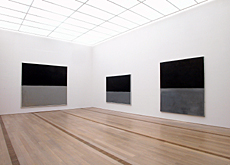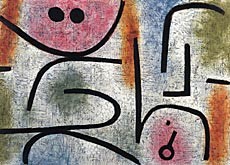Museum celebrates Rothko centennial

The only major exhibition to mark the centenary of the birth of Mark Rothko is sure to draw many thousands of visitors to the Beyeler foundation near Basel before it closes next April.
It covers every phase of the career of an artist regarded as one of the most important representatives of abstract expressionism.
The exhibition includes a room devoted solely to the celebrated “Black on Grey” paintings from Rothko’s final active months in 1969-70.
Rothko was born in Dvinsk, Russia – now Daugavpils in Latvia – and emigrated with his family to the United States in 1913, settling in Portland, Oregon.
Best-known for his large-format paintings with their superimposed rectangles, he was one of the great pioneers of post-war American art, whose works have grown in popularity since his suicide in 1970.
To mark the centenary, the Beyeler foundation has redesigned and expanded its Rothko Rooms, which in 2001 attracted nearly 200,000 visitors to a previous exhibition.
It was able to mount this latest exhibition with the assistance of the artist’s children, Kate Rothko Prizel and Christopher Rothko.
Creating chemistry
Christopher, who lives in New York, was present at the press preview.
“This is a very moving occasion for me,” he told swissinfo, “and I believe my father would have been delighted with the way curator Oliver Wick has organised the show.
“He is peerless in being able to arrange Rothko paintings for maximum interaction between them. Oliver has a wonderful eye for choosing the right paintings to work together and creating the chemistry between them.
“And this is one of the finest museums for Rothko I’ve seen. It’s beautiful in itself, but it stays out of the way of the paintings.”
The first two of the four Rothko Rooms have a representative selection of works from the 1950s and ‘60s.
“The hanging is based on the artist’s idea of abandoning chronological sequence in favor of juxtapositions that emphasize the works’ reciprocal effect,” said Wick.
“Accordingly, the second room is dominated by luminous colour accents, while the third is characterised by a subdued tone of reddish-brown – maroon. The culmination is the final room with its six Black on Grey Paintings.”
Life and vibrancy
This last section, completed during the artist’s final period of depression, might strike some viewers as depressing because of their blacks and greys.
But not Christopher Rothko: “Having grown up with them, I’ve always loved the Black on Grey Paintings, and there’s a particular concentration of them in the collections of my sister and myself. I find them full of life and vibrancy.”
Although Christopher Rothko was a young child when his father died, he retains vivid memories of what he was like.
“More than anything I remember his voice. It was big but very warm and I loved hearing it.
“I also have snapshots in my head of him around the house, in his studio and taking me to the park.”
After visiting the exhibition, Rothko went to Latvia, where a memorial plaque has been placed on the site of his father’s former home in Daugavpils.
“Mark Rothko – A Centennial Celebration” is at the Beyeler foundation in Riehen until April 12.
swissinfo, Richard Dawson in Riehen
Rothko was born Marcus Rothkovitz on September 25, 1903, in Dvinsk, Russia.
The family emigrated to the United States in 1913.
Rothko is regarded as one of the major representatives of abstract expressionism.
The last Rothko exhibition at the Beyeler foundation was in 2001 and drew 200,000 visitors in four months.
The photographs with this article are of works on loan from Kate Rothko Prizel and Christopher Rothko.

In compliance with the JTI standards
More: SWI swissinfo.ch certified by the Journalism Trust Initiative









You can find an overview of ongoing debates with our journalists here . Please join us!
If you want to start a conversation about a topic raised in this article or want to report factual errors, email us at english@swissinfo.ch.